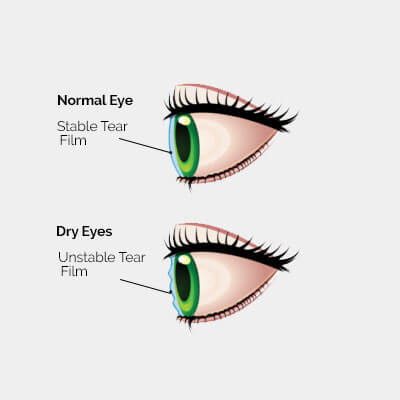Dry Eye Syndrome
The dry eye syndromes is a common eye condition which is prevalent among 50% of the people. It occurs when there is not enough tears in the tear glands to provide adequate lubrication for the eyes. This makes the eyes prone to bacterial infections, possible inflammation, or scarring on the cornea.

But what causes the dry eye syndrome and how can it be treated? Let's find out.
Causes of Dry Eye Syndrome
Generally, a dry eye results from an imbalanced tear-flow system. Or, it could be due to the following reasons:
-
Natural aging process
-
Side effects of drugs
-
Hormonal changes
-
Inflammed eyelids
-
Eye allergies
-
Decreased production of tears
-
Increased evaporation of tears
-
Increased exposure to a heater or air conditioner.
Symptoms of Dry Eye Syndrome
Irritation in the eyes is one of the first symptoms of dry eye syndrome. Other symptoms could follow it, like:
-
Burning sensation
-
Constant itching
-
Blurry vision
-
Redness
-
Accumulation of mucus
-
Difficulty in wearing contact lenses
-
Watery eyes
Best Ways to Treat Dry Eye Syndrome
It could take up to 6 months to completely treat dry eyes. But the time frame could also depend on the treatment method.. Here are some ways to treat dry eye syndrome.
-
Artificial Tear Drops
The most common treatment is using artificial tear drops. One can use them when their eyes feel dry.
-
Medications
Doctors may recommend anti-inflammatory medications that increase tear production and prevent further damage to the cornea.
-
Lacrimal plugs
Doctors may also recommend a reversible procedure that involves placing a plug to block the drainage holes in the eyes' corners.
-
Surgery
If none of the treatments seem to work, doctors may suggest a surgery to retain an adequate amount of tears.
Takeaway
Even though dry eyes are common, they can be painful. The right treatment can ease the pain and irritation. One can also indulge in prevention techniques like taking eye breaks, avoiding smoking, and using a humidifier to avoid dry eyes conditions in the future.